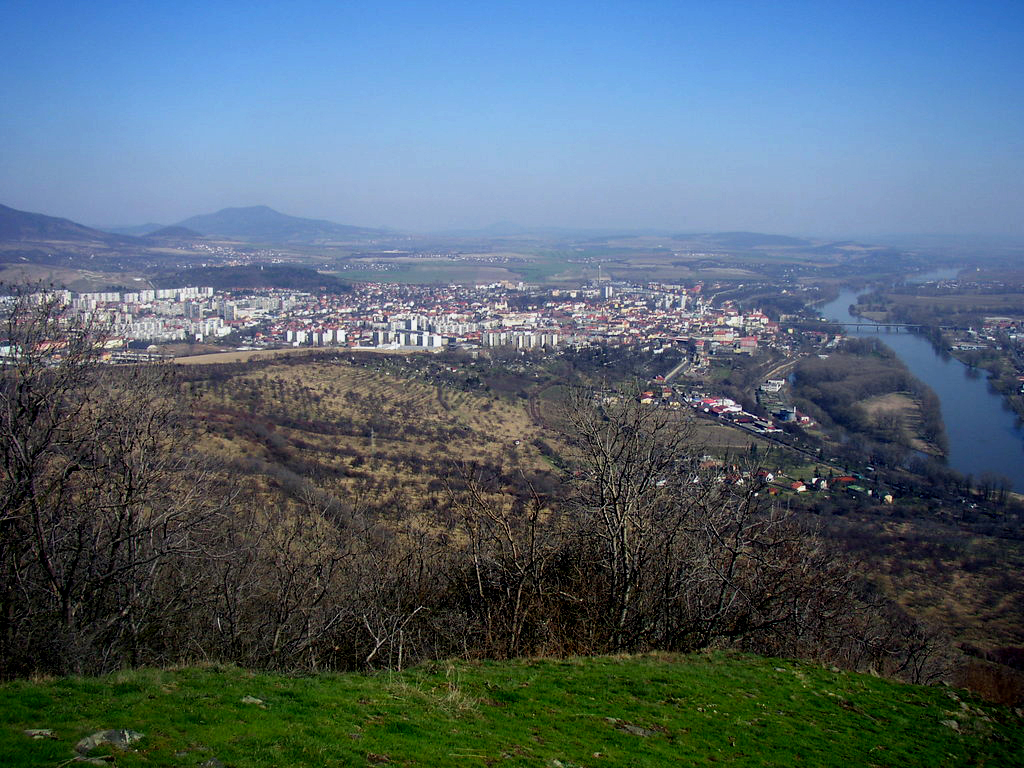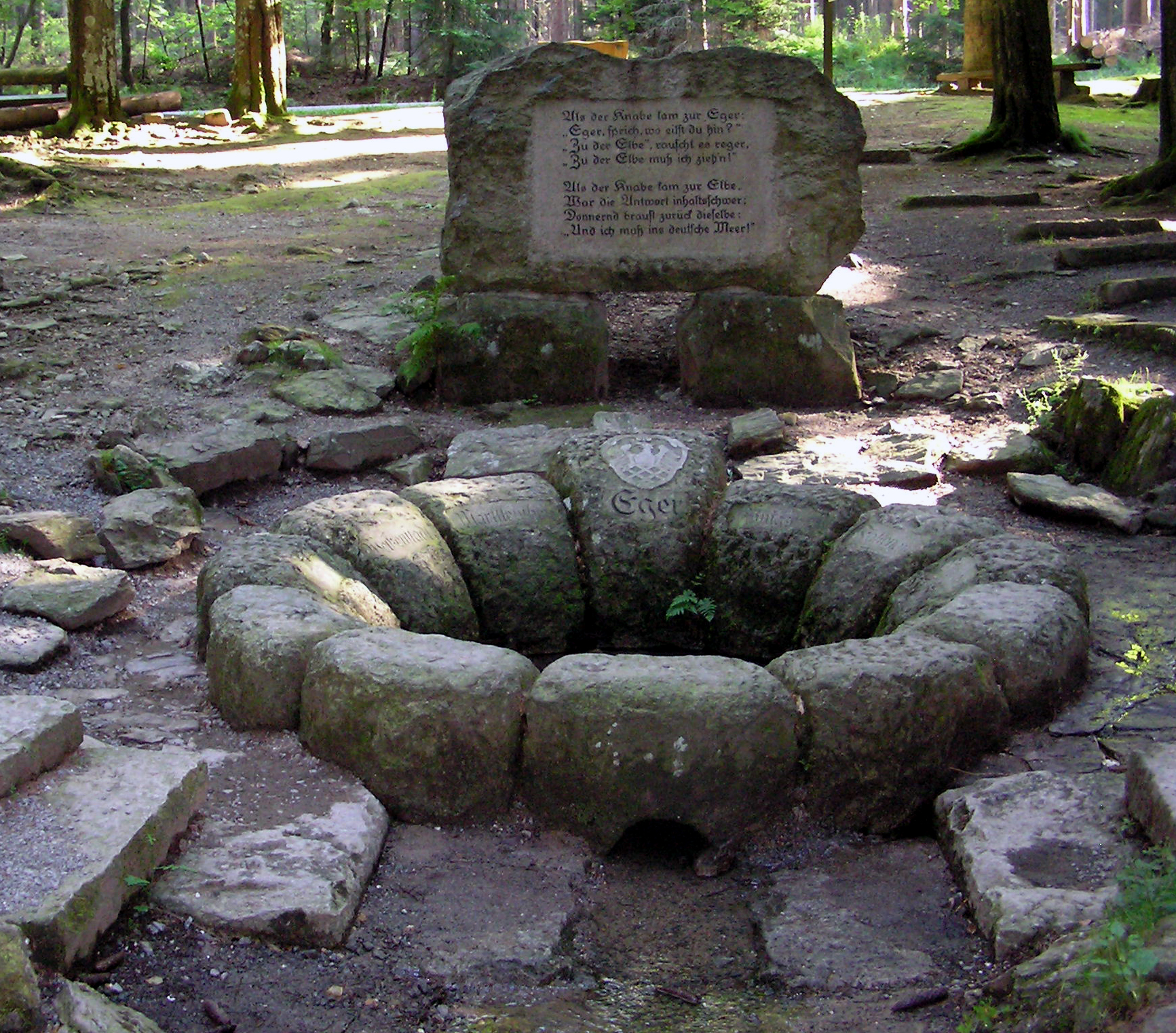|
Litoměřice
Litoměřice (; ) is a town in the Ústí nad Labem Region of the Czech Republic. It has about 23,000 inhabitants. The historic town centre is well preserved and is protected as an urban monument reservation. The town is the seat of the Roman Catholic Diocese of Litoměřice. Administrative division Litoměřice consists of four municipal parts (in brackets population according to the 2021 census): *Litoměřice-Město (1,503) *Pokratice (4,436) *Předměstí (17,483) *Za nemocnicí (10) Geography Litoměřice is located about south of Ústí nad Labem and northwest of Prague. The northwestern half of the municipal territory lies in the Central Bohemian Uplands, the southeastern half lies in the Lower Ohře Table, on the edge of the Polabí lowlands. The highest point, located in the northern tip of the territory, is at above sea level. The town is situated on the right (northern) bank of the Elbe River, at its confluence with the Ohře, which flows from the south. H ... [...More Info...] [...Related Items...] OR: [Wikipedia] [Google] [Baidu] |
Litoměřice District
Litoměřice District () is a Okres, district in the Ústí nad Labem Region of the Czech Republic. Its capital is the town of Litoměřice. Administrative division Litoměřice District is divided into three Districts of the Czech Republic#Municipalities with extended competence, administrative districts of municipalities with extended competence: Litoměřice, Lovosice and Roudnice nad Labem. List of municipalities Towns are marked in bold and market towns in ''italics'': Bechlín - Bohušovice nad Ohří - Bříza - Brňany - Brozany nad Ohří - Brzánky - Budyně nad Ohří - Býčkovice - Ctiněves - Černěves - Černiv - Černouček - Chodouny - Chodovlice - Chotěšov (Litoměřice District), Chotěšov - Chotiměř - Chotiněves - Chudoslavice - Čížkovice - Děčany - Dlažkovice - Dobříň - Doksany - Dolánky nad Ohří - Drahobuz - Dušníky - Evaň - Hlinná - Horní Beřkovice - Horní Řepčice - Hoštka - Hrobce - Jenčice - Kamýk (Litoměřice District), Kam ... [...More Info...] [...Related Items...] OR: [Wikipedia] [Google] [Baidu] |
Ústí Nad Labem Region
Ústí nad Labem Region or Ústecký Region () is an Regions of the Czech Republic, administrative unit () of the Czech Republic, located in the north-western part of the historical land of Bohemia, and named after the capital, Ústí nad Labem. It covers the majority of the former Administrative divisions of Czechoslovakia, North Bohemia province () and is part of the broader area of North Bohemia. The region borders the regions of Liberec Region, Liberec (east), Central Bohemian Region, Central Bohemia (south), Plzeň Region, Plzeň (southwest), Karlovy Vary Region, Karlovy Vary (west) and the German region of Saxony to the north. The Ústí nad Labem Region comprises a range of very different types of landscape. Between the high escarpment of the Ore Mountains range and the České středohoří, Bohemian Central Uplands with many volcanic hills, there are vast areas devastated by surface coal mining (the Most Basin), partly being recultivated into an artificial landscape with ... [...More Info...] [...Related Items...] OR: [Wikipedia] [Google] [Baidu] |
Elbe
The Elbe ( ; ; or ''Elv''; Upper Sorbian, Upper and , ) is one of the major rivers of Central Europe. It rises in the Giant Mountains of the northern Czech Republic before traversing much of Bohemia (western half of the Czech Republic), then Germany and flowing into the North Sea at Cuxhaven, northwest of Hamburg. Its total length is . The Elbe's major Tributary, tributaries include the rivers Vltava, Ohře, Saale, Havel, Mulde, and Schwarze Elster. The Elbe river basin, comprising the Elbe and its tributaries, has a catchment area of , the twelfth largest in Europe. The basin spans four countries; however, it lies almost entirely just in two of them, Germany (65.5%) and the Czech Republic (33.7%, covering about two thirds of the nation's territory). On its southeastern edges, the Elbe river basin also comprises small parts of Austria (0.6%) and Poland (0.2%). The Elbe catchment area is inhabited by 24.4 million people; its biggest cities are Berlin, Hamburg, Prague, Dresden a ... [...More Info...] [...Related Items...] OR: [Wikipedia] [Google] [Baidu] |
Ohře
The Ohře (), also known in English and German as Eger (), is a river in Germany and the Czech Republic, a left tributary of the Elbe River. It flows through the Bavarian district of Upper Franconia in Germany, and through the Karlovy Vary Region, Karlovy Vary and Ústí nad Labem Region, Ústí nad Labem regions in the Czech Republic. It is long, of which is in the Czech Republic, making it the List of rivers of the Czech Republic, fourth longest river in the country. Etymology The name is of Celtic language, Celtic or pre-Celtic origin. In the 9th century, it appeared as ''Agara''. According to one theory, its meaning was 'salmon river' (composed of the words ''ag'', ''eg'' – 'salmon', and ''are'', ''ara'' – 'flowing water'). Another theory suggests that the name was derived from ''agriā'' and meant a fast-moving, fast-flowing river. In the 12th century, Ohře was written as ''Egre'', ''Oegre'' and ''Ogre''. Course The Ohře originates in the territory of Weißenstadt i ... [...More Info...] [...Related Items...] OR: [Wikipedia] [Google] [Baidu] |
Districts Of The Czech Republic
Districts of the Czech Republic are territorial units, formerly used as second-level administrative divisions of the Czech Republic. After their primary administrative function has been abolished in 2003, they still exist for the activities of specific authorities and as statistical units. Their administrative function was moved to selected municipalities. Establishment In 1960, Czechoslovakia was re-divided into districts (''okres'', Grammatical number, plural ''okresy''), often without regard to traditional division and local relationships. In the area of the Czech Republic, there were 75 districts; the 76th Jeseník District was split from Šumperk District in 1996. Three consisted only of the Statutory city (Czech Republic), statutory cities of Brno, Ostrava and Plzeň, which gained the status of districts only in 1971; Ostrava and Plzeň districts were later expanded. The capital city of Prague has a special status, being considered a municipality and region at the same time ... [...More Info...] [...Related Items...] OR: [Wikipedia] [Google] [Baidu] |
Ústí Nad Labem
Ústí nad Labem (; ) is a city in the Czech Republic. It has about 91,000 inhabitants and is the capital of the Ústí nad Labem Region. It is a major industrial centre and, besides being an active river port, is an important railway junction. Administrative division Ústí nad Labem is divided into four self-governing boroughs. In addition, Ústí nad Labem consists of 22 municipal parts (in brackets population according to the 2021 census): *Ústí nad Labem-město (35,015) **Božtěšice (496) **Bukov (5,988) **Habrovice (395) **Hostovice (249) **Klíše (6,944) **Předlice (1,544) **Skorotice (1,379) **Strážky (234) **Vaňov (755) **Všebořice (2,870) **Ústí nad Labem-centrum (14,161) *Ústí nad Labem-Neštěmice (22,148) **Krásné Březno (12,417) **Mojžíř (4,222) **Neštěmice (5,509) *Ústí nad Labem-Severní Terasa (18,965) **Severní Terasa (18,965) *Ústí nad Labem-Střekov (13,585) ** Brná (1,308) **Církvice (179) **Kojetice (129) **Olešnice (89) ** S ... [...More Info...] [...Related Items...] OR: [Wikipedia] [Google] [Baidu] |
České Středohoří
The České středohoří (), also known as Central Bohemian Uplands or Central Bohemian Highlands,e.g. ''The New Encyclopaedia Britannica, Volume 31'', Encyclopaedia Britannica, 1998, p. 371 is a geomorphological region in northern Bohemia of the Czech Republic. Geography The region is about 80 km long, extending from Česká Lípa in the northeast to Louny in the southwest and from Litoměřice in the south to Děčín in the north, and is intersected by the river Elbe. The mountains, which are of volcanic origin, have distinctively sharp solitary peaks. Protection The eponymous protected landscape area covers most of the uplands' territory; consequently, construction through the area of the D8 motorway (part of European route E55 between Dresden and Prague Prague ( ; ) is the capital and List of cities and towns in the Czech Republic, largest city of the Czech Republic and the historical capital of Bohemia. Prague, located on the Vltava River, has a population ... [...More Info...] [...Related Items...] OR: [Wikipedia] [Google] [Baidu] |
Lower Ohře Table
The Lower Ohře Table () is a plateau and a geomorphological mesoregion of the Czech Republic. It is located in the Ústí nad Labem and Central Bohemian regions. Geomorphology The Lower Ohře Table is a mesoregion of the Central Bohemian Table within the Bohemian Massif. Typical features of the landscape are relatively intact relief with significant manifestations of neotectonics (in the southeastern and southern part of the table) and relief of Pleistocene river terraces and wide valley floodplains (in the north and east), and tectonic and denudation depressions. The plateau is further subdivided into the microregions of Hazmburk Table, Říp Table and Terezín Valley. Two prominent hills of neovolcanic origin rise from the flat relief, otherwise there are no significant peaks. The highest peaks of the Lower Ohře Table are: * Říp, * Hazmburk, *V Březinách, *Veselá, *Draha, Geography The territory has a relatively compact shape, slightly elongated from west to ea ... [...More Info...] [...Related Items...] OR: [Wikipedia] [Google] [Baidu] |
Ottokar I Of Bohemia
Ottokar I (; 1155 – 1230) was Duke of Bohemia periodically beginning in 1192, then acquired the title of King of Bohemia, first in 1198 from Philip of Swabia, later in 1203 from Otto IV of Brunswick and in 1212 (as hereditary) from Frederick II. Ottokar was the first hereditary King of Bohemia; although two previous Bohemian monarchs ( Vratislaus and Vladislaus II) had held the title of King, in each case the title was awarded only for the life of the recipient. He was an eminent member of the Přemyslid dynasty. Early years Ottokar's parents were Vladislaus II, Duke of Bohemia, and Judith of Thuringia. His early years were passed amid the anarchy that prevailed everywhere in the country. After several military struggles, he was recognized as ruler of Bohemia by Holy Roman Emperor Henry VI in 1192. He was, however, soon overthrown for joining a conspiracy of German princes to bring down the Hohenstaufen dynasty. In 1197, Ottokar forced his brother, Duke Vladis ... [...More Info...] [...Related Items...] OR: [Wikipedia] [Google] [Baidu] |
Hussite Wars
The Hussite Wars, also called the Bohemian Wars or the Hussite Revolution, were a series of civil wars fought between the Hussites and the combined Catholic forces of Sigismund, Holy Roman Emperor, Holy Roman Emperor Sigismund, the Papacy, and European monarchs loyal to the Catholic Church, as well as various Hussite factions. At a late stage of the conflict, the Utraquists changed sides in 1432 to fight alongside Roman Catholics and opposed the Taborites and other Hussite factions. These wars lasted from 1419 to approximately 1434. The unrest began after pre-Protestant Christian reformer Jan Hus was executed by the Catholic Church in 1415 for heresy. Because Sigismund had plans to be crowned the Holy Roman Emperor (requiring papal coronation), he suppressed the religion of the Hussites, yet it continued to spread. When King Wenceslaus IV of Bohemia, brother of Sigismund, died of natural causes a few years later, the tension stemming from the Hussites grew stronger. In Prague ... [...More Info...] [...Related Items...] OR: [Wikipedia] [Google] [Baidu] |
West Slavs
The West Slavs are Slavic peoples who speak the West Slavic languages. They separated from the common Slavic group around the 7th century, and established independent polities in Central Europe by the 8th to 9th centuries. The West Slavic languages diversified into their historically attested forms over the 10th to 14th centuries. Today, groups which speak West Slavic languages include the Poles, Czechs, Slovaks, Silesians, Kashubians, and Sorbs. From the ninth century onwards, most West Slavs converted to Roman Catholicism, thus coming under the cultural influence of the Latin Church, adopting the Latin alphabet, and tending to be more closely integrated into cultural and intellectual developments in western Europe than the East Slavs, who converted to Eastern Orthodox Christianity and adopted the Cyrillic alphabet. Linguistically, the West Slavic group can be divided into three subgroups: Lechitic, including Polish, Silesian, Kashubian, and the extinct Polabian and Po ... [...More Info...] [...Related Items...] OR: [Wikipedia] [Google] [Baidu] |





